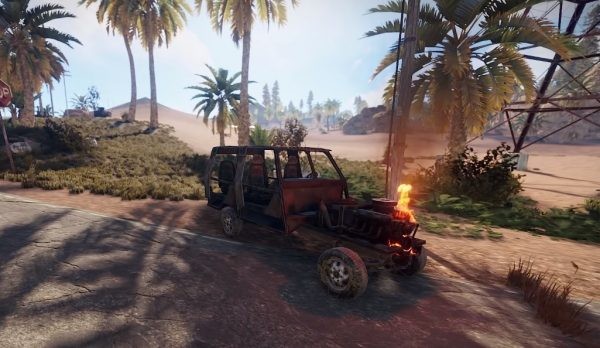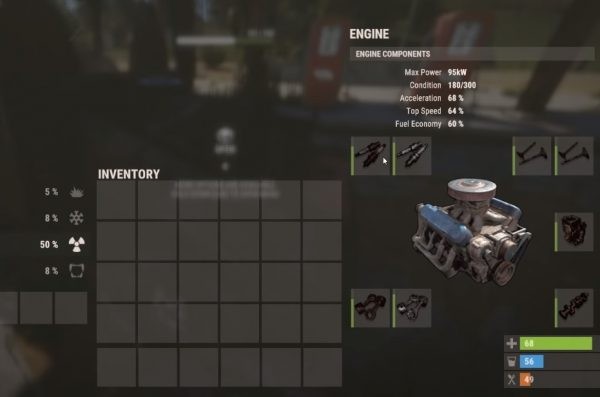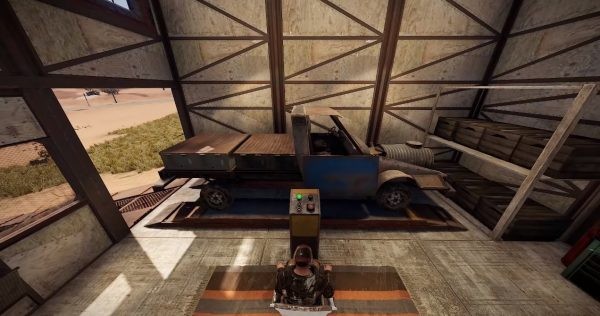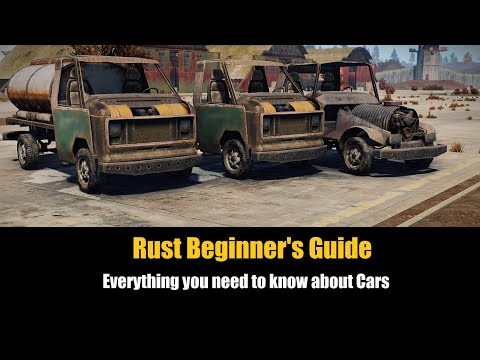Modular Vehicles have revolutionized travel in Rust, offering players unprecedented customization and mobility. But finding a chassis is just the beginning. To get these vehicles road-ready, repair and upgrades are essential. This guide will walk you through how to repair your car in Rust, ensuring you can build and maintain your own personalized ride across the island.
Locating and Initially Repairing Your Rusty Car Chassis
Your journey to vehicle ownership starts by finding a Rusty car chassis. These can be located scattered alongside roads throughout the Rust map. Keep an eye out for smoke and sparks emanating from them, making them easier to spot. Often, these chassis will already have some modules attached.
Upon finding a chassis, the first step in car repair in Rust is addressing the initial damage. You can use basic resources like Metal Fragments, High-Quality Metal, and Wood to repair the existing modules or remove them if necessary. While low-grade fuel can be used to attempt to move the vehicle, or you can push it, true mobility requires engine repair. Be cautious when pushing – these vehicles can cause serious harm if they roll back on you!
Essential Engine Components for Car Repair in Rust
To truly repair your car in Rust and get it running, you need to focus on the engine. Several key components are necessary, and these can be acquired through various methods: purchasing from vendors, looting from toolboxes, or crafting them yourself. It’s also important to note that engine parts come in low, medium, and high-quality variants, each affecting performance and durability. Blueprints for these parts can be researched at a research table. The essential engine parts for car repair in Rust are:
- Spark Plug
- Carburetor
- Shift Stick / Crankshaft
- Valves
- Pistons
To install these, simply interact with the engine part of the vehicle. Crafting these components requires a significant amount of scrap for blueprints, so prioritize looting. Investing in higher-grade parts during car repair in Rust will noticeably improve your vehicle’s top speed, fuel efficiency, and acceleration.
Finding Medium Quality Parts at the Air Wolf Vendor
For players looking to expedite their car repair in Rust process with decent quality components, the Air Wolf vendor at the Bandit Camp is your go-to. This vendor stocks medium-quality engine parts, saving you the grind of finding or crafting them from scratch. They also conveniently sell vehicle lifts for scrap, a crucial item for further vehicle modification. Blueprinting medium-quality parts from the Air Wolf will cost around 125 scrap per item. High-quality components, however, are not sold here and must be sourced from vending machines at the Outpost.
Utilizing a Vehicle Lift for Advanced Car Repair and Modification in Rust
While basic car repair in Rust can be done with a hammer to install engine parts, modifying your vehicle with modules requires a vehicle lift and a power source. This lift is essential for any serious vehicle customization.
You can purchase a vehicle lift from the Air Wolf vendor for approximately 175 scrap. Alternatively, if you have Workbench Level 2, you can research it for 125 scrap and then craft it yourself for 1000 metal fragments, 10 high-quality metal, and three gears. Placement requires a relatively large, flat area (minimum 6×3 foundation) and one unit of power to operate. Ensure the location is easily accessible to your vehicle.
Once powered, the vehicle lift allows you to add and remove modules, taking your car repair in Rust beyond just engine fixes and into full customization. Gather or craft the modules you desire, and use the lift to attach them, creating your ideal souped-up vehicle. For security, craft a metal key for 15 scrap to prevent unauthorized use. Remember to keep the key on your person!
Exploring Available Vehicle Modules for Rust Cars
A significant part of car repair in Rust and vehicle ownership is understanding and utilizing modules. There are various modules available, each serving different purposes and requiring substantial resources to craft. Here’s a breakdown of some key modules and their crafting requirements:
| Vehicle module | Crafting cost | Research cost | Workbench level required |
|---|---|---|---|
| Armored Cockpit | 250 metal fragments, five high-quality and 50 wood | 125 scrap | Level 3 |
| Cockpit | 250 meal fragments, five high-quality metal and 100 wood | 125 scrap | Level 2 |
| Cockpit with Engine | 250 metal fragments, eight high-quality metal and 100 wood | 125 scrap | Level 2 |
| Engine | 250 metal fragments and five high-quality metal | 125 scrap | Level 2 |
| Fuel Tank | 400 metal fragments, five high-quality metal and 100 wood | 125 scrap | Level 2 |
| Passenger module | 500 metal fragments, five high-quality metal and 250 wood | 125 scrap | Level 2 |
| Rear Seats | 250 metal fragments, five high-quality metal and 100 wood | 125 scrap | Level 2 |
| Flatbed | 250 metal fragments, five high-quality metal and 100 wood | 125 scrap | Level 2 |
| Large Flatbed | 400 metal fragments, five high-quality metal and 250 wood | 125 scrap | Level 2 |
| Storage | 250 metal fragments, five high-quality metal and 250 wood | 125 scrap | Level 2 |




Remember that vehicle components left outdoors will decay over time, emphasizing the importance of upkeep. Chassis size also varies, taking up two, three, or four Socket slots depending on the size. For a visual guide to modular vehicles and car repair in Rust, consider watching this helpful video.
Mastering how to repair cars in Rust and utilize modular vehicles opens up a new dimension of gameplay. From basic engine fixes to extensive customization with modules, understanding these mechanics is key to dominating the roads of Rust.
